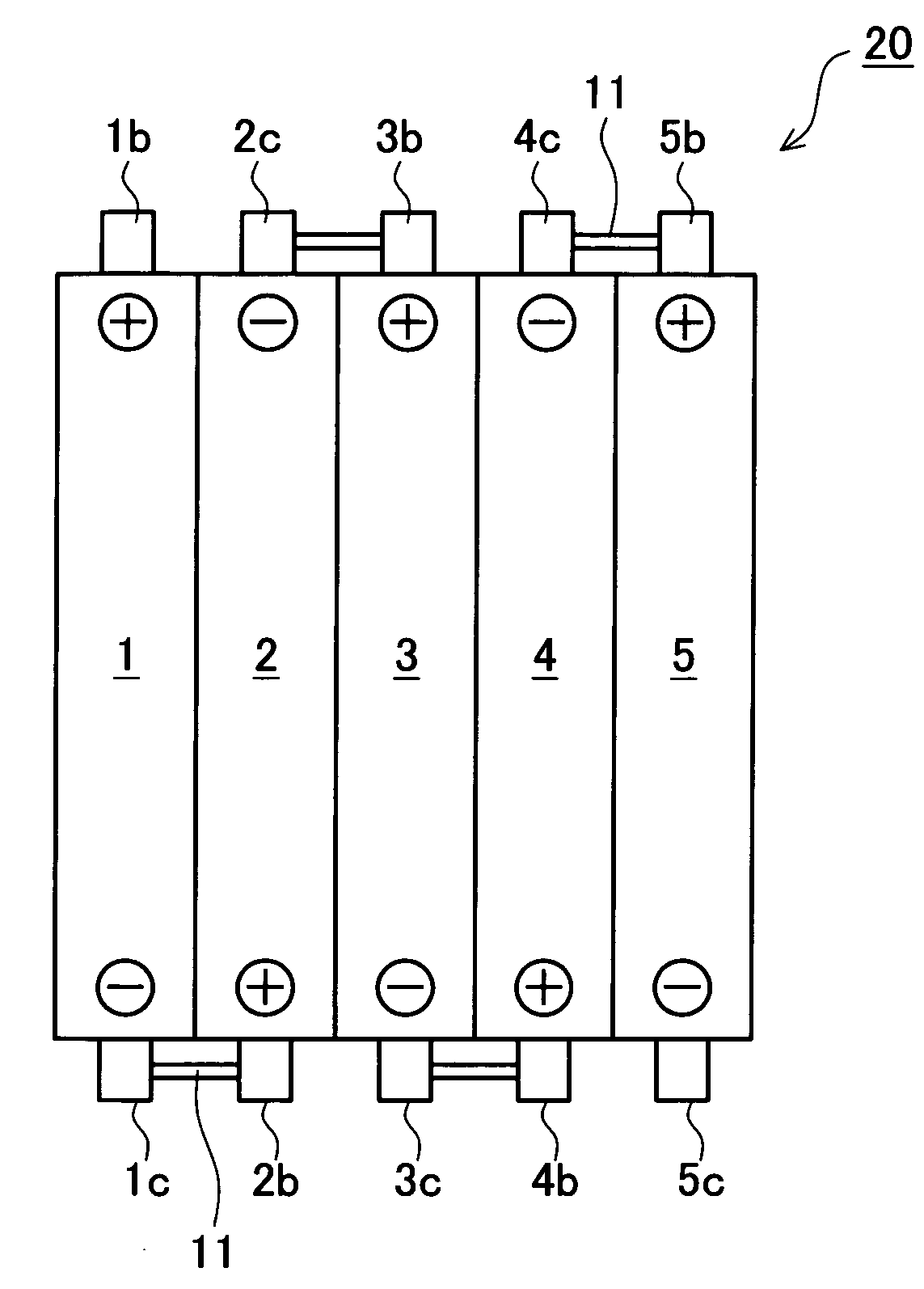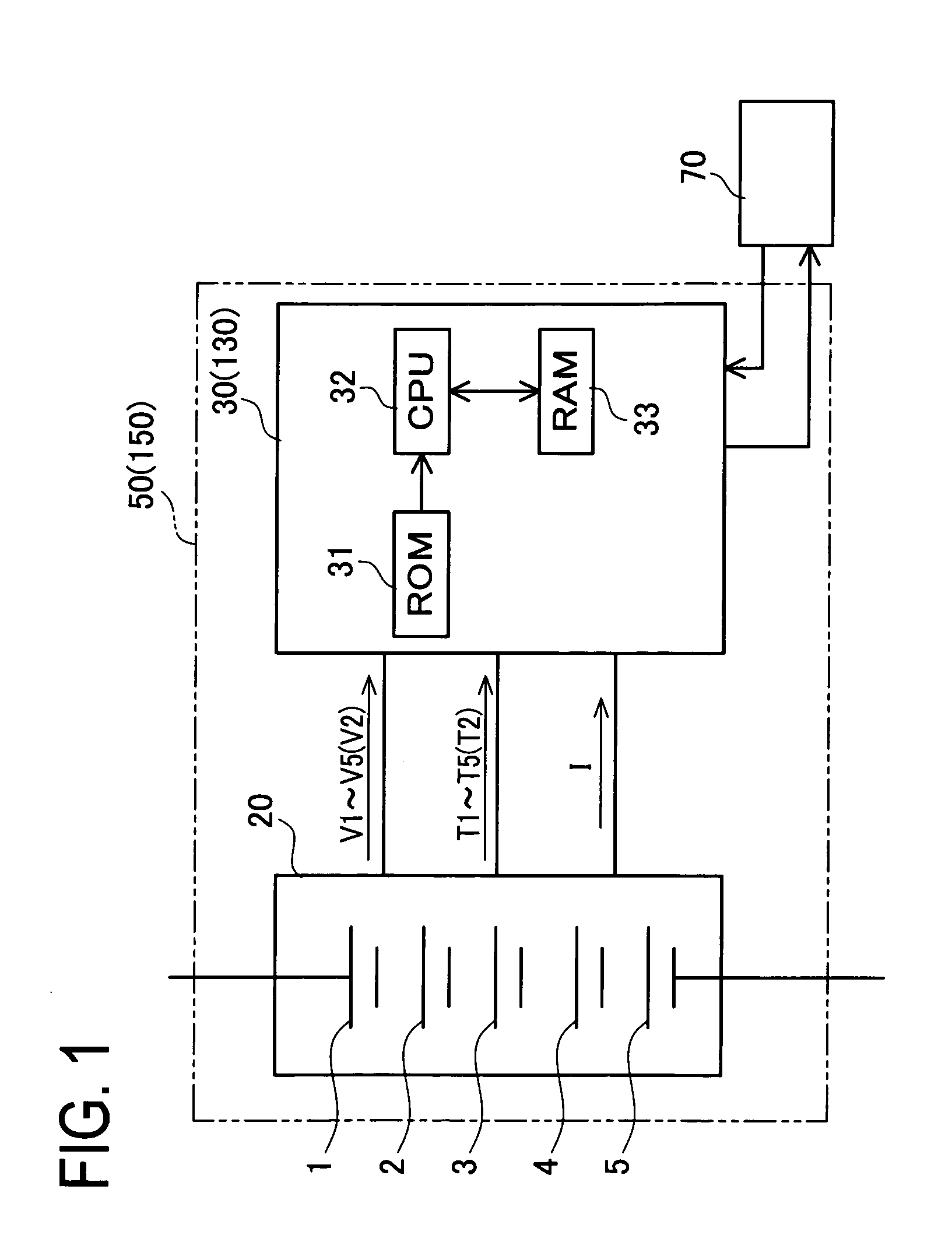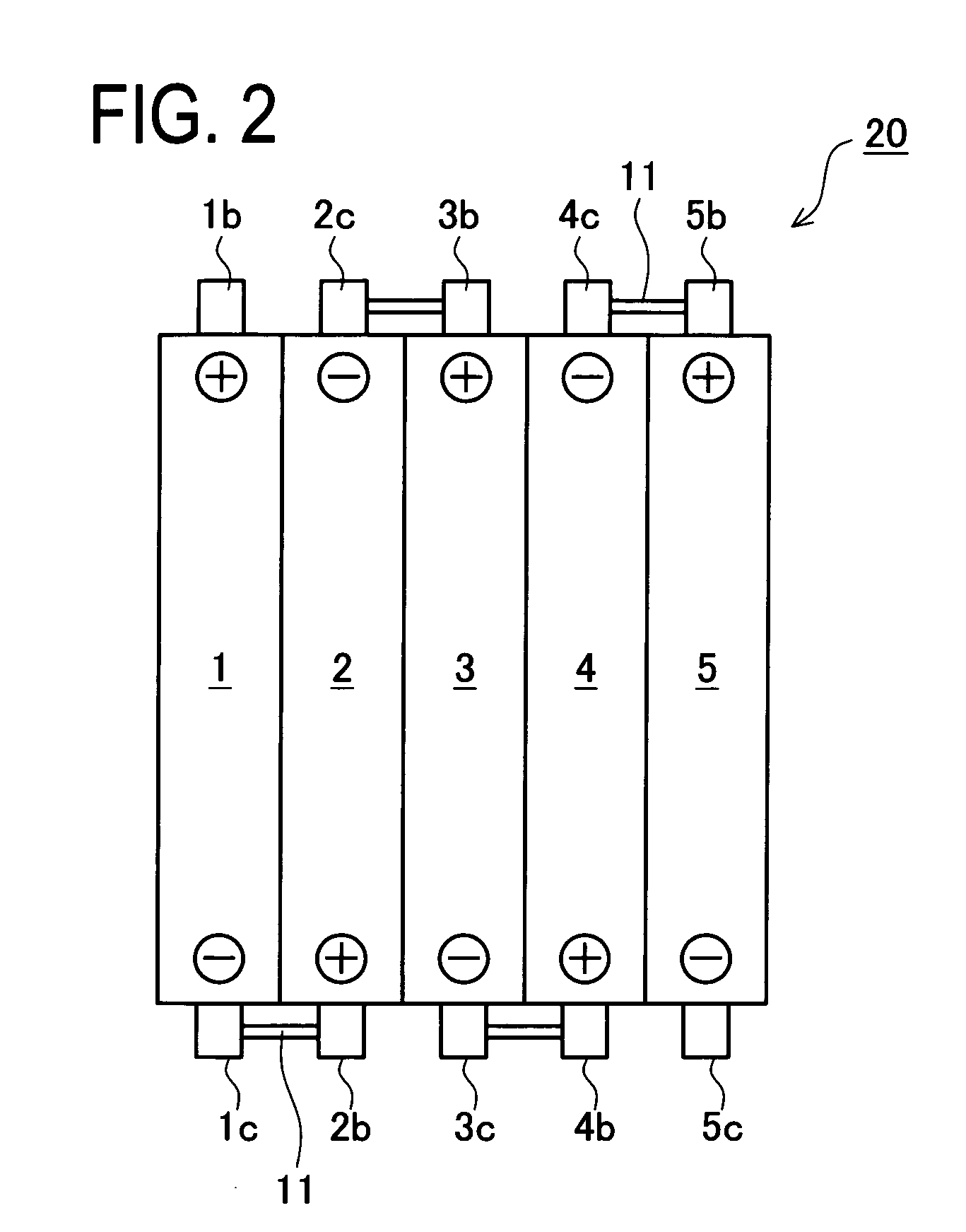Battery pack producing method and battery pack
a battery pack and production method technology, applied in the direction of electrochemical generators, instruments, transportation and packaging, etc., can solve the problems of insufficient performance of the used secondary battery of the larger full charge capacity, the use of the secondary battery of the smaller full charge capacity is likely to be overcharged or overdischarged, and the overcharge of the used secondary battery of the smaller full charge capacity. to achieve the effect of suppressing defects such as overcharging
- Summary
- Abstract
- Description
- Claims
- Application Information
AI Technical Summary
Benefits of technology
Problems solved by technology
Method used
Image
Examples
embodiment 1
[0043]A detailed description of a first preferred embodiment of the present invention will now be given referring to the accompanying drawings.
[0044]A battery pack 50 equipped with a controller (hereinafter, “controller-equipped battery pack 50”) in this embodiment is first explained. The controller-equipped battery pack 50 includes, as shown in FIG. 1, a battery pack 20 and a battery controller 30. As shown in FIG. 2, the battery pack 20 includes five used secondary batteries (used secondary batteries 1 to 5) arranged in a row and electrically connected in series by way of connection members 11.
[0045]The battery controller 30 is a known battery controller (see, for example, JP2006-79961A), and includes a ROM 31, a CPU 32, a RAM 33, and others. As shown in FIG. 1, the battery controller 30 is configured to detect battery voltages V1 to V5, battery temperatures T1 to T5, and current value I of used secondary batteries 1 to 5 constituting the battery pack 20 (in the first embodiment, ...
embodiment 2
[0073]A battery pack equipped with a controller (“controller-equipped battery pack”) 150 in a second embodiment is similar to the controller-equipped battery pack 50 in the first embodiment, except the processing program (not shown) incorporated in the battery controller.
[0074]More specifically, a battery controller 130 in the second embodiment is configured to detect the battery voltage V2, battery temperature T2, and current value I of only the used secondary battery 2 out of the used secondary batteries 1 to 5 constituting the battery pack 20. Based on these values, the storage amount (the storage electric quantity) of the used secondary battery 2 is estimated. Based on the estimated charge amount, the state of charge (SOC) of the battery 2 is estimated. That is, charging and discharging of the used secondary batteries 1 to 5 are controlled based on the estimated SOC of the secondary battery 2.
[0075]Control of charging and discharging of the battery pack 20 in the second embodime...
PUM
 Login to View More
Login to View More Abstract
Description
Claims
Application Information
 Login to View More
Login to View More - R&D
- Intellectual Property
- Life Sciences
- Materials
- Tech Scout
- Unparalleled Data Quality
- Higher Quality Content
- 60% Fewer Hallucinations
Browse by: Latest US Patents, China's latest patents, Technical Efficacy Thesaurus, Application Domain, Technology Topic, Popular Technical Reports.
© 2025 PatSnap. All rights reserved.Legal|Privacy policy|Modern Slavery Act Transparency Statement|Sitemap|About US| Contact US: help@patsnap.com



